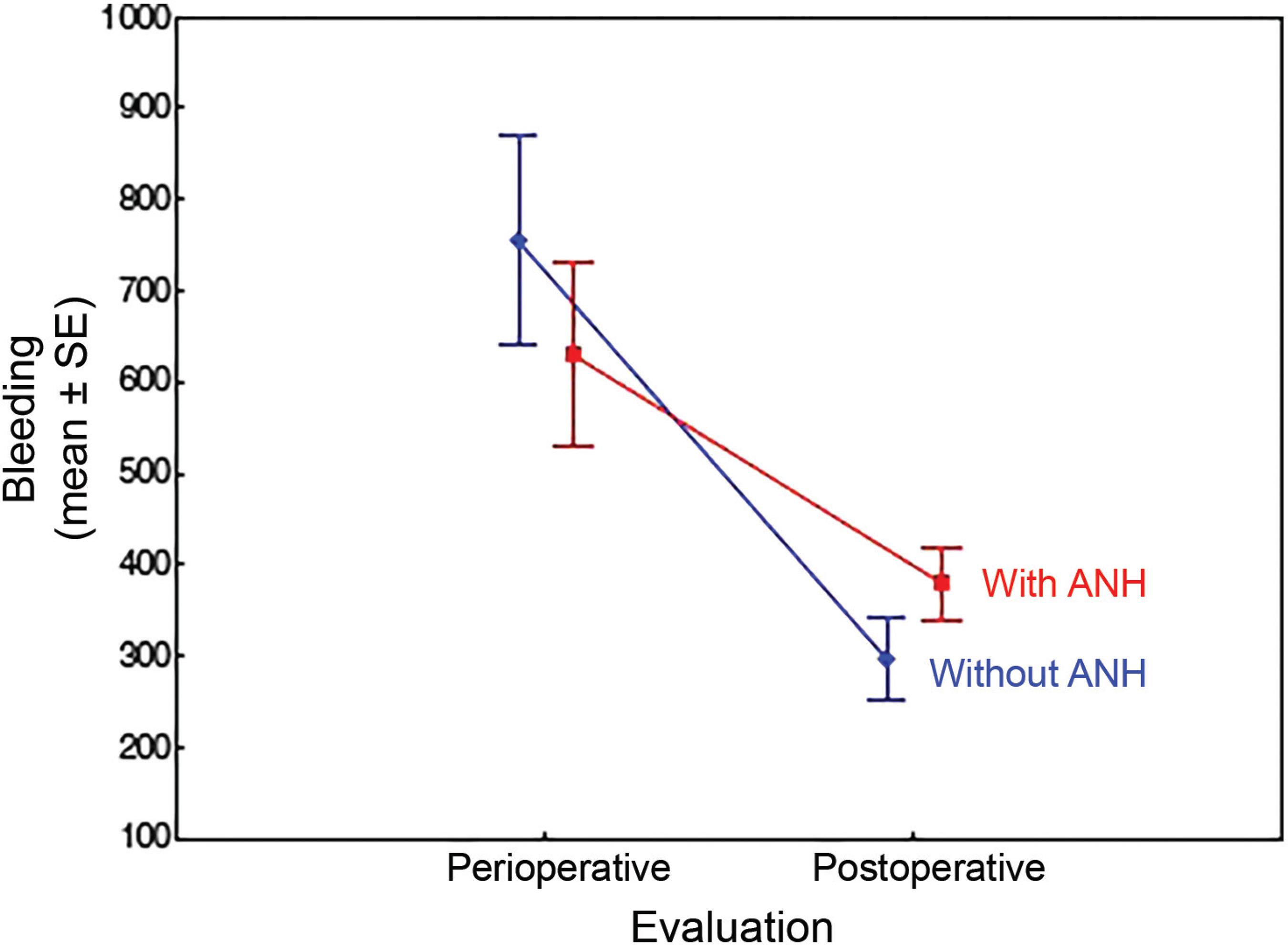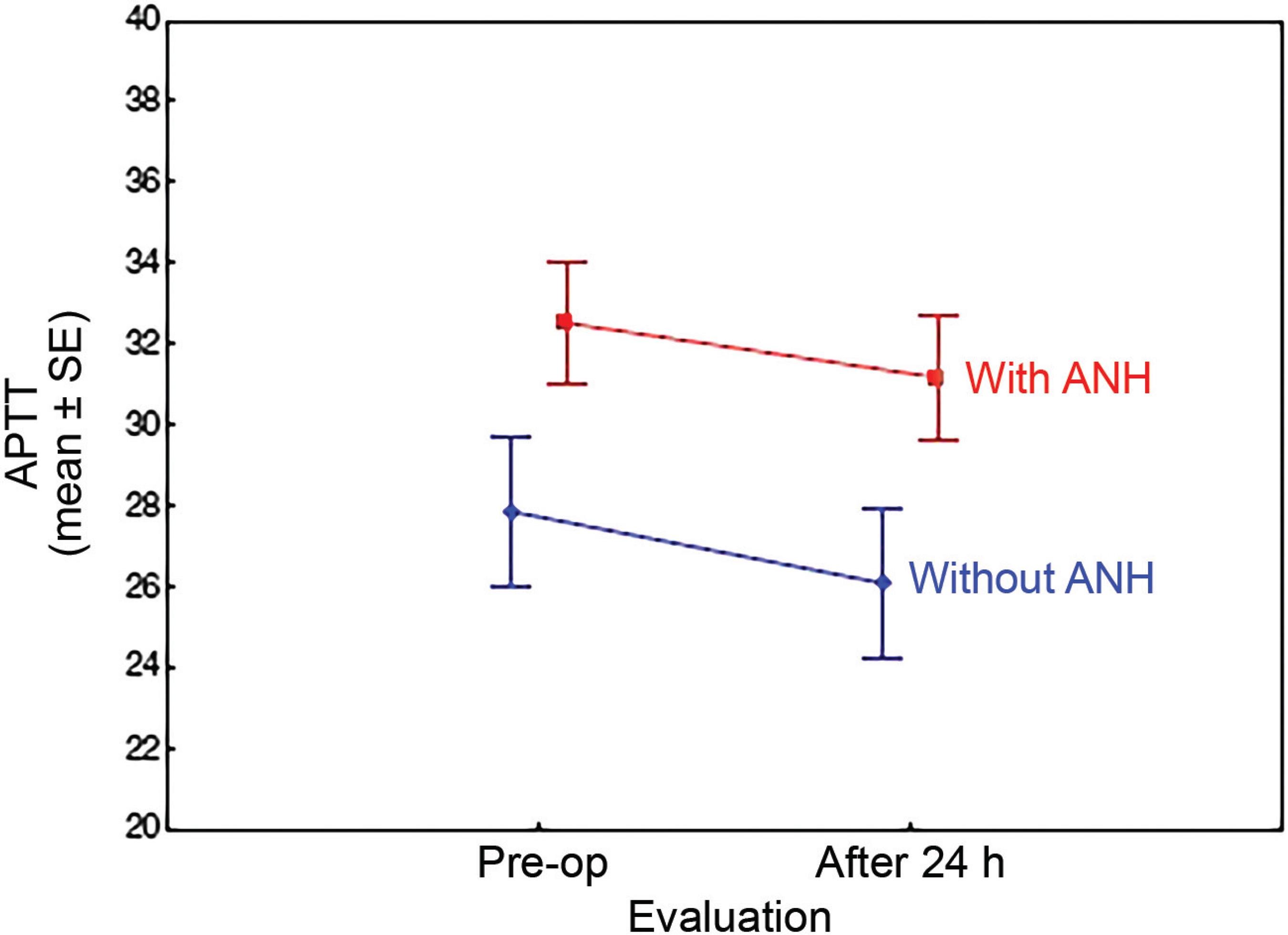Abstract
Objective
To prospectively compare the clinical and laboratorial aspects of patients undergoing spine deformity surgery, using the acute normovolemic hemodilution technique with tranexamic acid, versus a control group with tranexamic acid alone, and to evaluate the influence of hemodilution in intraoperative bleeding and the need for homologous transfusion.
Materials and Methods
Comparative prospective study with patients aged between 12 and 65 years undergoing spine deformity surgery with the acute normovolemic hemodilution technique associated with tranexamic acid versus a control group to which only tranexamic acid (15 mg/kg) was administered. Laboratorial exams were performed and analyzed in three different moments.
Results
A total of 30 patients were included in the present study: 17 in the hemodilution group, and 13 in the control group. The mean duration of the surgery in the hemodilution group was longer. The number of levels submitted to surgery ranged from 7 to 16 in the hemodilution group, and from 4 to 13 in the control group. Osteotomy, predominantly of the posterior kind, was performed in 20 patients. There was more intraoperative bleeding in the control group. All patients were stable during the procedures. Only 6 participants needed homologous blood transfusion, mostly from the control group (p > 0.05).
Conclusion
There was no significant difference between the two groups regarding the need for blood transfusion and intraoperative bleeding. The severity of the deformity was the main determinant for homologous blood transfusion.
Keywords
hemodilution/methods; bleeding; autologous blood transfusion; spine; scoliosis







